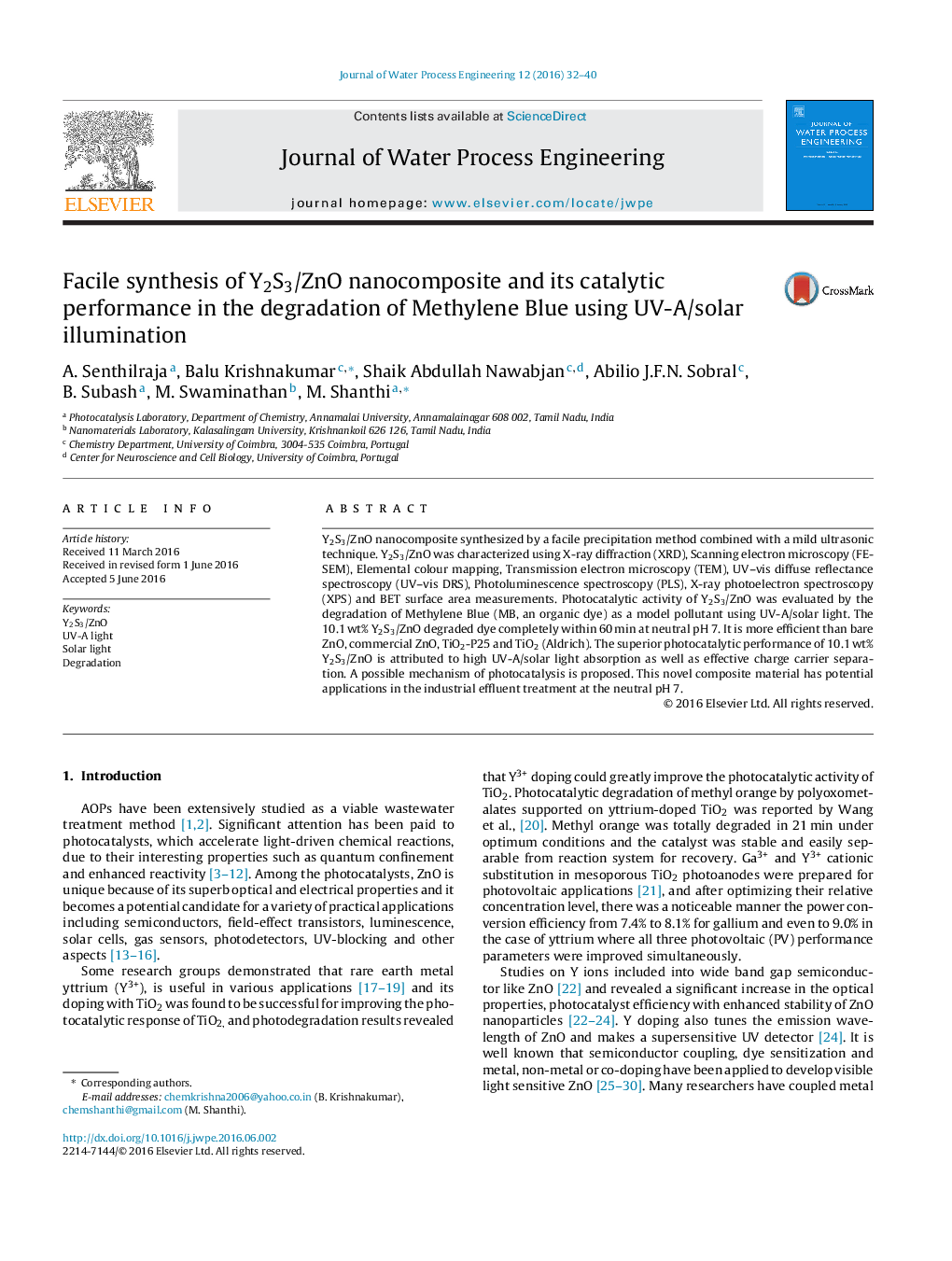| Article ID | Journal | Published Year | Pages | File Type |
|---|---|---|---|---|
| 232412 | Journal of Water Process Engineering | 2016 | 9 Pages |
•A simple method adopted for the synthesis of novel Y2S3/ZnO.•Y2S3/ZnO nanocomposite has a large potential for industrial effluent treatment.•Y2S3/ZnO is more efficient at neutral pH than prepared and commercial catalysts.
Y2S3/ZnO nanocomposite synthesized by a facile precipitation method combined with a mild ultrasonic technique. Y2S3/ZnO was characterized using X-ray diffraction (XRD), Scanning electron microscopy (FE-SEM), Elemental colour mapping, Transmission electron microscopy (TEM), UV–vis diffuse reflectance spectroscopy (UV–vis DRS), Photoluminescence spectroscopy (PLS), X-ray photoelectron spectroscopy (XPS) and BET surface area measurements. Photocatalytic activity of Y2S3/ZnO was evaluated by the degradation of Methylene Blue (MB, an organic dye) as a model pollutant using UV-A/solar light. The 10.1 wt% Y2S3/ZnO degraded dye completely within 60 min at neutral pH 7. It is more efficient than bare ZnO, commercial ZnO, TiO2-P25 and TiO2 (Aldrich). The superior photocatalytic performance of 10.1 wt% Y2S3/ZnO is attributed to high UV-A/solar light absorption as well as effective charge carrier separation. A possible mechanism of photocatalysis is proposed. This novel composite material has potential applications in the industrial effluent treatment at the neutral pH 7.
Graphical abstractFigure optionsDownload full-size imageDownload as PowerPoint slide
